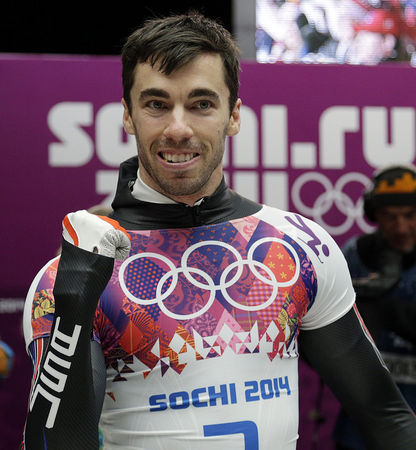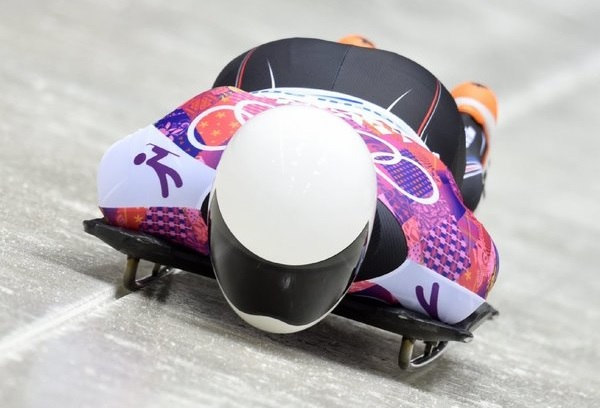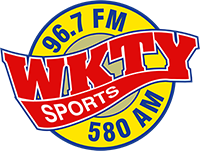
Prairie du Chien's Antoine takes Bronze
KRASNAYA POLYANA, Russia – When you go up against the guy that’s won 25 of the last 28 World Cup races, there isn’t much chance.
And then there’s the Russian competing in his backyard, on a course lined with countrymen chanting, “Ro-ssi-ya, Ro-ssi-ya.”
So, there weren’t a ton of expectations for the kid from Prairie du Chien, Wis. – the kid that, up until a few months ago, wasn’t even in the conversation. Only the expectations that these are the Olympics, and this could be your only shot at a medal ever.
This was the setup for the Sochi Olympics skeleton finals Saturday morning.
In the end, it was the Russian for gold, the favorite winning silver, and Antoine taking bronze.
By the time Antoine, 28, went for his final run, gold and silver were off the table. The times were too quick. 
Antoine also had just heard his roommate, John Daly, blew his chance for bronze, slipping at the start, and that opened the door.
All Antoine needed to do was let the course and the sled do the work.
“We’ve had the philosophy all season that you don’t have to be perfect to be fast,” Antoine, a 2003 PdC High graduate, told USA Today. “(Friday), I tried to be a little too perfect. Today, the goal was to let it flow more and let the sled run.”
Russia’s Alexander Tretiakov won gold in 3 minutes, 44.29 seconds. Latvia’s Martins Kukurs, the favorite, took silver (3:45.1) and Antoine finished with a bronze (3:47.26), edging out Martins’ brother, Tomass, by .32 seconds.
Antoine beat Tretiakov by .63 seconds on Dec. 13, 2013, on his home ice – in Lake Placid, N.Y. – at the World Cup.
Antoine’s bronze is the first medal in the skeleton by the U.S. since Jimmy Shea won gold in 2002 in Salt Lake City, Utah. Coincidentally, that’s where Antoine first realized he wanted to be part of this event, having never heard of it before – possibly because it had taken an Olympic hiatus from 1948 until The Games in 2002 or possibly because he was a 17-year-old going to Prairie du Chien High School.
“I first saw skeleton in 2002, when it made its return to the Olympics (in Salt Lake City) full time,” Antoine said back in January. “I’d always been into racing and winter sports. The U.S. had huge success in those games, winning gold. It was a huge story during the Olympics. It got a lot of exposure, and it really caught my attention.”
 So, Antoine went to work all those years ago. Tried out and was cut. At that point, most folks give up, because if you can’t make a team in an event that consists of sliding head first down a hill, how is it you’re going to improve?
So, Antoine went to work all those years ago. Tried out and was cut. At that point, most folks give up, because if you can’t make a team in an event that consists of sliding head first down a hill, how is it you’re going to improve?
But instead, Antoine worked at the little things he could improve, tried out again a year later and made it.
“I got told I wasn’t good enough at that first tryout,” Antoine told the Associated Press’ Tim Reynolds in mid-December, 2013. “I didn’t believe it. We joke about it now. … I got that taste of it for a week, I knew it was something that I loved and I didn’t believe that I didn’t have it.”
He worked his way to the doorstep of the 2010 Vancouver Olympic Games, but missed making the U.S. team by one spot. The next season he was the top U.S. slider, but later discovered a right-knee injury and the 2011-12 season was a disaster.
This season, he had no expectations, and, like a lot of athletes do when the pressure is off, he burst back onto the scene, got his first gold in the World Cup and put the U.S. back on the map with the bronze in Sochi.
